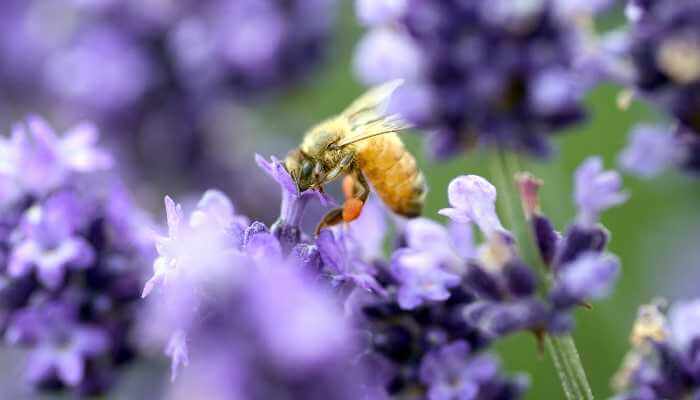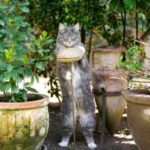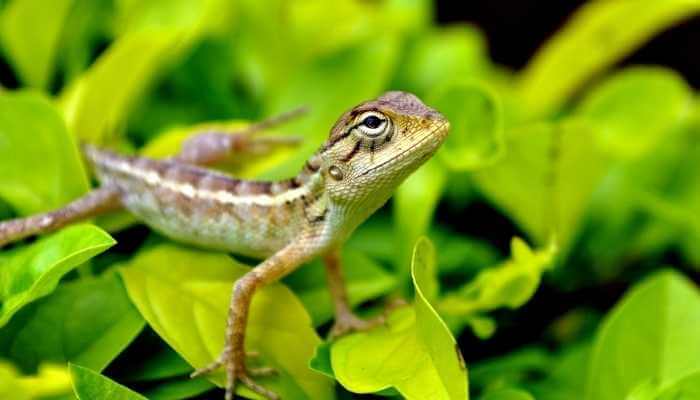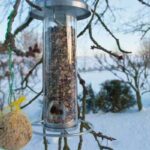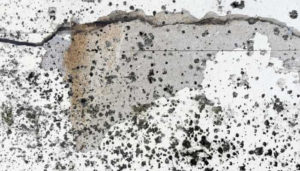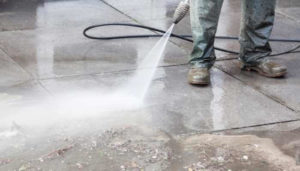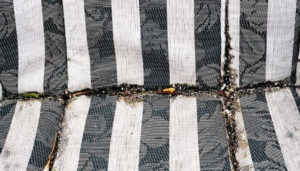While working on Backyard Boosts and landscaping my home, I’ve been asked, “why do you plant so much lavender?” I love the smell of lavender, but I also love that bees and other pollinators love lavender just as much.
Bees and wasps love lavender because of its scent, its color, the shape of it’s flower, and because it has a high nectar yield.
If you’re thinking about planting lavender in your backyard, let me tell you more about this plant and the pollinators that go wild over it.
What is Lavender?
Lavender is a perennial herb that blooms from late spring through mid-summer. The flowers are cone-shaped and colored purple to blue. Here, they actually bloom into fall and early winter. The flowers are clustered on the top of the stems and have a sweet honey aroma. Once the plant gets into good growth, its stems are densely packed and create a perfect spot for pollinators.
Both wasps and bees of all kinds love lavender. They are drawn to it, even though the lavender essential oil might repel them. Because the scent of extracted lavender is more pungent, it’s often used on the skin to eliminate pesky insects. I sometimes grab lavender from my planter and rub it over my skin to get that effect.
What’s So Special About Lavender? Why Do Bees Love Lavender?
Bees like lavender because of its unique scent profile. Lavender has a floral scent with hints of minty undertones, and this combination makes it extremely attractive to bees and other pollinators. It’s a member of the mint family (Lamiaceae). So, it’s related to other very aromatic plants.
That being said, sometimes lavender’s scent masks the scent of other nearby plants. This means pollinators are less likely to be distracted and instead focus on the lavender that calls to them.
Lavender also has a high nectar yield. This means it produces much more pollen and nectar than the average blooming plant. Bees need that nectar to produce honey for the queen bee and the hive’s survival. It provides them the energy to keep going, and the spare nectar goes to the hive. If a plant provides more nectar than others, the bee can travel less to get more of what it needs.
The bee’s attraction goes beyond smell and nectar content. Studies show that bees also like the look of lavender flowers—their color and shape make them stand out from other flowers in the field or garden. The flower shape also makes it much easier to collect nectar (and, therefore, pollen) in the first place.
What Are Good Companion Plants to Lavender?
So you want plenty of lavender in your yard but some variety, too? I mean, it’d be kind of plain and possibly dull if that’s all you had. Several plants do well when planted with lavender. Some actually belong to the same minty family!
Sage and lavender are a match made in heaven. The two plants work well together because they like partial to full sun and good drainage. Sage’s scent also blends well with lavender’s aroma. However, it doesn’t bloom as much.
Rosemary is also one of the best plants for pollinators. It also pairs perfectly with lavender because it has similar water needs. Rosemary also helps repel pests away from your lavender plants!
Thyme is another excellent choice for pairing with lavender. Thyme is a perennial herb that blooms for pollinators as well! You’ll want to make sure you have enough room between the two herbs so that they don’t crowd each other out. Both tend to mound up.
Sometimes it’s the lavender that is the better companion. Take fruit trees, for instance. Lavender bushes planted around them can bring in the pollinators that fruit trees need for pollination. At the same time, lavender repels pests that target fruit trees.
The same can be done with other crop plants. Take any cabbage, lettuce, or kale and plant lavender around it. The moths that commonly infest your crops are less likely to show up, thanks to the lavender. And those that do? Well, wasps are attracted to lavender, and wasps are predators that eat moth larvae.
In Conclusion
I love lavender because it’s easy to grow and has such a pleasing scent. I can make all kinds of homemade products from lavender, too. So it makes me very happy to find out that one of the plants I love most also helps local pollinators.
If you get the chance to grow this plant in your yard, I wholeheartedly approve! And if you want to know more about what you can make from those blooms and leaves, let me know. I’ll be happy to tell you what I’ve made or found!
